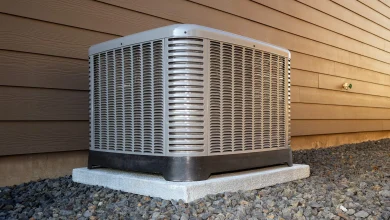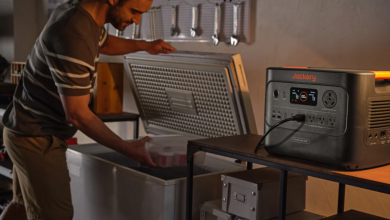
Ultimate Smart Storage Solutions Guide When Moving Houses in the UK
There’s always excitement involved with starting a new chapter and moving to a new residence. But it can be difficult to arrange and store your priceless possessions safely, given the idiosyncrasies of British housing and the climate.
Thankfully, you don’t need to worry because we’ve carefully compiled a comprehensive guide that will competently lead you through the intricate maze of storage alternatives during your move. We will also highlight the crucial role that self-storage facilities have played in this article.
Assessing Your Storage Needs Before the Move
Before packing, take a step back and assess your storage needs. Inventory your belongings, and categorise them by size, fragility, and how often you’ll need them. Consider the duration of storage – short-term for quick moves or long-term for extended relocations. Items with special needs, like climate control or extra security, require special attention. And if you have items that won’t fit but you can’t part with, a storage facility might be of help.
Short-Term Storage Solutions for Quick Moves
Quick moves demand swift storage solutions. When it comes to finding storage solutions that are fast and easy to use, portable storage units and container storage are the best choices. They will allow you to pack at your own pace. This option is particularly useful when time is important.
On the other hand, container storage offers a safe and weather-resistant environment for your belongings. It is an ideal choice for short-term storage during a move. These solutions guarantee that your belongings are kept securely and are accessible when needed.
Long-Term Storage for Extended Relocations
For long-distance or international moves, choosing a climate-controlled storage facility is very important. These facilities offer the perfect conditions to keep your items safe throughout the entire relocation process.
Additionally, they provide great protection against extreme temperatures and high levels of humidity. To avoid damage, more caution is essential. They offer the best conditions to keep your belongings secure from high humidity and temperatures.
Fragile items should be properly wrapped and cushioned. Furniture should be adequately protected as well.
Packing for long-term storage requires extra care, and negotiating long-term storage contracts can prove to be a wise financial decision. It will result in cost savings compared to short-term alternatives.
However, be ready for the maintenance and periodic checks that long-term storage necessitates. Frequent inspections guarantee that your belongings stay in good condition and enable any necessary modifications to the storage space.
Utilising Self-Storage Facilities During Relocation
Self-storage facilities are the unsung heroes of house moves. Choose the perfect size and type of storage unit, keeping security, access hours, and location in mind. Organise your items within your storage unit for easy retrieval.
Consider creating an inventory or labelling boxes to streamline the process. Additionally, exploring cost-effective options can help you save money during a move, and many self-storage facilities offer various plans to accommodate different budgets.
Packing and Preparing Your Items for Storage
The art of packing cannot be overstated. Different items require different materials – boxes, bubble wrap, furniture covers – you name it. Labelling and inventorying items are your allies for quick access.
Clearly mark boxes with their contents to fasten the unpacking process. Make an inventory to help you keep track of your belongings so that nothing is misplaced during the packing and storage phases.
Fragile, valuable, or bulky items demand extra care. Wrap delicate items in bubble wrap or packing paper, and use appropriate padding for valuable or bulky items. Furniture covers can protect against scratches and dust.
In addition to protecting against physical damage, remember to take precautions against bugs, dust, and moisture at bay. Consider using pest deterrents, moisture-absorbing products, and sealing items in plastic wrap or bags for added protection.
Relocation Timeline: Planning Your Move and Storage
A meticulously planned relocation timeline is your secret weapon. This timeline, starting weeks or months before the move, covers every aspect – from booking movers to securing storage and packing. Coordinating move-out and move-in dates with storage is pivotal. Ensure that the storage facility is available and ready for your items when needed. This synchronisation helps avoid last-minute hassles, so when moving day arrives, you’ll be well-prepared. Your items will be packed, labelled, and ready for transport.
Special Considerations for UK Moves
The UK throws in its quirks – narrow roads, terraced houses, and bustling cities like London can make moving a unique challenge. Flats or apartments with limited access require special attention. Legal and insurance aspects must not be overlooked, and resources specific to UK relocations can be your guiding light.
Local moving companies offer various short-term or long-term storage solutions with options available to suit your specific requirements. Take advantage of these resources, especially those with camera access, to make a successful and smooth move.
Post-Move: Retrieving Items from Storage
The final act involves retrieving items from storage. Efficiency is key here, and reintegrating stored items into your new home requires finesse. Use this opportunity to reorganise or downsize. And if any issues arise with the storage facility, address them promptly. Don’t forget to provide feedback and reviews. It’s invaluable for others embarking on this journey.
Here are some essential considerations for this step:
- Efficient Unpacking – Make it easy on yourself by unpacking with the labels in mind. A well-organised inventory helps speed up the process.
- Reorganise and Downsize – Take this chance to rethink your space. Maybe some things could find a new home, or it’s time for a little decluttering.
- Address Any Issues – If there were hiccups during storage, deal with them pronto. It would be better to resolve any concerns right away.
- Share Your Experience – Let others know about your storage experience. Your feedback can be super helpful for someone else going through a similar move.
- Final Checks and Security – Before you’re done, make sure everything is in good shape. And if there were security features, follow any steps to wrap things up securely.
In the end, getting your items back is a chance for a fresh start. So, unpack, rearrange, and don’t forget to leave a little review for the next person.
Conclusion
In the intricate dance of moving houses, storage plays a pivotal role. Careful planning and organisation can transform the daunting into the manageable. Self-storage facilities offer the flexibility and security you need during this transition.
So, as you embark on your house-moving adventure, remember that strategic storage choices can turn a potentially chaotic process into a smooth and organised transition. Happy moving!




